2018 年 6 月英语六级真题(第二套)
Part I
Writing
(30 minutes)
(请于正式开考后半小时内完成该部分,之后将进行听力考试)
Directions:For this part, you are allowed 30 minutes to write an essay on the
importance
of
building
trust
between
businesses
and
consumers. You can cite examples to illustrate yourviews. you should write at least
150 words but no more than 200 words.
Part II
Section A
Listening Comprehension
(30 minutes)
Directions:Inthissection,youwillheartwolongconversations.Attheendofeachconversation,
youwillhearfourquestions.Boththeconversationandthequestionswillbespokenonlyonce.After
you hear a question, you must choose the best answer from the four choices marked A), B), C) and
D). Then mark the corresponding letter on Answer Sheet 1 with a single line through the centre.
注意:此部分试题请在答题卡 1 上作答。
Questions 1 to 4 are based on the conversation you have just heard.
Questions 1 to 4 are based on the conversation you have just heard.
1. A) She advocates animal protection.
B) She sells a special kind of coffee.
C) She is going to start a café chain.
D) She is the owner of a special café.
2. A) They bear a lot of similarities.
B) They are a profitable business sector.
C) They cater to different customers.
D) They help take care of customers' pets.
�
3. A) By giving them regular cleaning and injections.
B) By selecting breeds that are tame and peaceful.
C) By placing them at a safe distance from customers.
D) By briefing customers on how to get along with them.
4. A) They want to learn about rabbits.
B) They like to bring in their children.
C) They love the animals in her café.
D) They give her café favorite reviews.
Questions 5 to 8 are based on the conversation you have just heard.
5. A) It contains too many additives.
B) It lacks the essential vitamins.
C) It can cause obesity.
D) It is mostly garbage.
6. A) Its fancy design.
B) TV commercials.
C) Its taste and texture.
D) Peer influence.
7. A) Investing heavily in the production of sweet foods.
B) Marketing their products with ordinary ingredients.
C) Trying to trick children into buying their products.
D) Offering children more varieties to choose from.
8. A) They hardly ate vegetables.
B) They seldom had junk food.
C) They favored chocolate-coated sweets.
D) They liked the food advertised on TV.
Section B
Directions: In this section, you will hear two passages. At the end of each
passage,youwillhearthreeorfourquestions.Boththepassageandthequestions
willbespokenonlyonce.Afteryouhearaquestion,youmustchoosethebestanswer
fromthefourchoicesmarkedA),B),C)andD).Thenmarkthecorrespondingletter
on Answer Sheet 1 with a single line through the centre.
�
Questions9 to 12 are based on the passage you have just heard.
9.A)Stretches of farmland.
C) Tombs of ancient rulers.
B)
Typical Egyptian animal farms.
D) Ruins left by devastating floods.
10.A) It provides habitats for more primitive tribes.
B)It is hardly associated with great civilizations.
C)It has not yet been fully explored and exploited.
D)It gathers water from many tropical ruin forests.
11.A) It carries about one fifth of the world’s fresh water.
B) It has numerous human settlements along its banks.
C)
It is second only to the Mississippi River in width.
D)
It is as long as the Nile and the Yangtze combined.
Questions 12 to 15 are based on the passage you have just heard.
12.A) Living a life in the fast lane leads to success.
B)
We are always in a rush lo do various things.
C)
The search for tranquility has become a trend.
D)
All of us actually yearn for a slow and calm life.
13.A)
She had trouble balancing family and work
B)
She enjoyed the various social events.
C)
She was accustomed to tight schedules.
D)
She spent all her leisure time writing books.
14.A) The possibility of ruining her family.
B)Becoming aware of her declining health.
�
C)
The fatigue from living a fast-paced life.
D)
Reading a book about slowing down.
15.
A) She started to follow the cultural norms.
B)
She came to enjoy doing everyday tasks.
C)
She learned to use more polite expressions.
D)
She stopped using to-do lists and calendars.
Section C
Directions: Inthissection,youwillhearthreerecordingsoflecturesortalks
followedbythreeorfourquestions.Therecordingswillbeplayedonlyonce.After
you hear a question, you must choose the best answer from the four choices marked
A),B),C)andD).ThenmarkthecorrespondingletteronAnswerSheet1withasingle
line through the centre.
Questions 16 to18 are based on the recording you have just heard.
16.A)Theywillrootoutnativespeciesaltogether.
B)Theycontributetoaregion'sbiodiversity.
C)Theyposeathreattothelocalecosystem,
D)Theywillcrossbreedwithnativespecies.
17.A)Theirclassificationsaremeaningful.
B)Theirinteractionsarehardtodefine.
C)Theirdefinitionsarechangeable.
D)Theirdistinctionsareartificial.
18.A)Onlyafewofthemcauseproblemstonativespecies.
B)Theymayturnouttobenefitthelocalenvironment.
�
C)Fewofthemcansurviveintheirnewhabitats.
D)Only10percentofthemcanbenaturalized.
Questions 19 to 21 are based on the recording you have just heard.
19.A)Respecttheirtraditionalculture.
B)Attendtheirbusinessseminars.
C)Researchtheirspecificdemands.
D)Adopttherightbusinessstrategies.
20.A)Showingthemyourpalm.
B)Givingthemgiftsofgreatvalue.
C)Drinkingalcoholoncertaindaysofamonth.
D)Clickingyourfingersloudlyintheirpresence.
21. A) They are very easy to satisfy.
B) They have a strong sense of worth.
C)Theytendtobefriendlyandenthusiastic.
D)Theyhaveabreakfrom2:00to5:30p.m
Questions 22 to 25 are based on the recording you have just heard.
22.A)Hecompletelychangedthecompany 'sculture.
B)Hecollectedpaintingsbyworld-famousartists.
C)HetookoverthesalesdepartmentofReader’sDigest.
D)Hehadthecompany'sboardroomextensivelyrenovated.
23.A)Itshouldbesoldatareasonableprice.
B)Itsarticlesshouldbeshortandinspiring.
�
C)Itshouldbepublishedintheworld'sleadinglanguages.
D)Itsarticlesshouldentertainblue-andpink-collarworkers.
24.A)Heknewhowtomakethemagazineprofitable.
B)Heservedasachurchministerformanyyears.
C)Hesufferedmanysetbacksandmisfortunesinhislife.
D)Hetreatedtheemployeeslikemembersofhisfamily.
25.A)Itcarriedmanymoreadvertisements.
B) George Grune joined it as an ad salesman.
C)Severalhundredofitsemployeesgotfired.
D)Itssubscriptionsincreasedconsiderably.
Part Ⅲ
Reading Comprehension
(40 minutes)
Section A
Directions: In this section, there isa passagewithten blanks.Youarerequired
toselectonewordforeachblankfromalistofchoicesgiveninawordbankfollowing
the passage. Read the passage through carefully before making your choices, Each
choiceinthebankisidentifiedbyaletter.Pleasemarkthecorrespondingletter
foreachitemonAnswerSheet2withasinglelinethroughthecentre.Youmaynot
use any of the words in the bank more than once.
Did Sarah Josepha Hale write "Mary 's Little Lamb",the eternal nursery rhyme
(儿歌)about a girl named Mary with a stubborn lamb? This is still disputed, but
it's clear that the woman (26)_______ for writing it was one of America's most
fascinating (27)_______ .In honor of the poem's publication on May 24, 1830, here's
more about the (28)_______ author's life.
Hale wasn’t just a writer, she was also a (29)_______ social advocate, and she
�
was particularly
(30)_______with an ideal New England, which she associated with
abundant Thanksgiving meals that she claimed had "a deep moral influence". She began
a nationwide (31)_______to have a national holiday declared that would bring
families together while celebrating the (32)_______ festivals. In 1863, after 17
years of advocacy including letters to five presidents, Hale got it. President
Abraham Lincoln, during the Civil War, issued a (33)_______ setting aside the last
Thursday in November for the holiday.
The true authorship of "Mary 's Little Lamb" is disputed. According to the New
England Historical Society, Hale wrote only part of the poem, but claimed authorship.
Regardless of the author, it seems that the poem was (34)_______ by a real event.
When young Mary Sawyer was followed to school by a lamb in 1816,it caused some
problems. A bystander named John Roulstone wrote a poem about the event, then, at
some point, Hale herself seems to have helped write it. However, if a 1916 piece
by her great-niece is to be trusted, Hale claimed for the (35)_______of her life
that “some other people pretended that someone else wrote the poem”.
注意:此部分试题请在答题卡 2 上作答。
A)campaign
B)career
C)characters
D)features
E)fierce
F)inspired
G)latter
H)obsessed
I)proclamation
J)rectified
K)reputed
L)rest
M) supposed
N)traditional
O)versatile
Section B
Directions:Inthissection,youaregoingtoreadapassagewithtenstatements
attachedtoit.Eachstatementcontainsinformationgiveninoneoftheparagraphs.
Identify the paragraph from which the information is derived. You may choose a
paragraph more than once. Each paragraph is marked with a letter. Answer the
questions by marking the corresponding letter on Answer Sheet 2.
�
Grow Plants Without Water
[A]Eversincehumanitybegantofarmourownfood
,
we'vefacedtheunpredictablerainthatisbothfriendandenemy.Itcomesandgoeswithou
tmuchwarning,andafieldoflush(
茂
盛
的
)
leafygreensoneyearcandryupandblowawaythenext.Foodsecurityandfortunesdependo
nsufficientrain,andnowheremoresothaninAfrica,where96%offarmlanddependsonrai
ninsteadoftheirrigationcommoninmoredevelopedplaces.Ithasconsequences:SouthA
fricasongoingdrought
—
theworstinthreedecades
一
willcostatleastaquarterofitscorn cropthisyear.
[B]BiologistJillFarrantoftheUniversityofCapeTowninSouthAfricasaysthatnaturehasp
lentyofanswersforpeoplewhowanttogrowcropsinplaceswithunpredictablerainfall.
Sheishardatworkfindingawaytotaketraitsfromrarewildplantsthatadapttoextremed
ryweatherandusetheminfoodcrops.Astheearth'sclimatechangesandrainfallbecomes
evenlesspredictableinsomeplaces,thoseanswerswillgrowevenmorevaluable.Thetyp
eoffarmingI'maimingforisliterallysothatpeoplecansurviveasit'sgoingtogetmore
andmoredry,"Farrantsays.
[C]Extremeconditionsproduceextremelytoughplants.IntherustyreddesertsofSouthAfri
ca,steep-sidedrockyhillscalledinselbergsrearupfromtheplainslikethebonesofth
eearth.Thehillsareremnantsofanearliergeologicalera,scrapedbareofmostsoiland
exposedtotheelements.Yetontheseandsimilarformationsindesertsaroundtheworld,
afewfierceplantshaveadaptedtoendureunderever-changingconditions.
[D] Farrant calls them resurrectionplants(复苏植物).During months without water
under a harsh sun, they wither, shrink and contract until they look like a pile
of dead gray leaves. But rainfall can revive them in a matter of hours. Her
time-lapse (间歇性拍摄的)videos of the revivals look like someone playing a
tape of the plant's death in reverse.
�
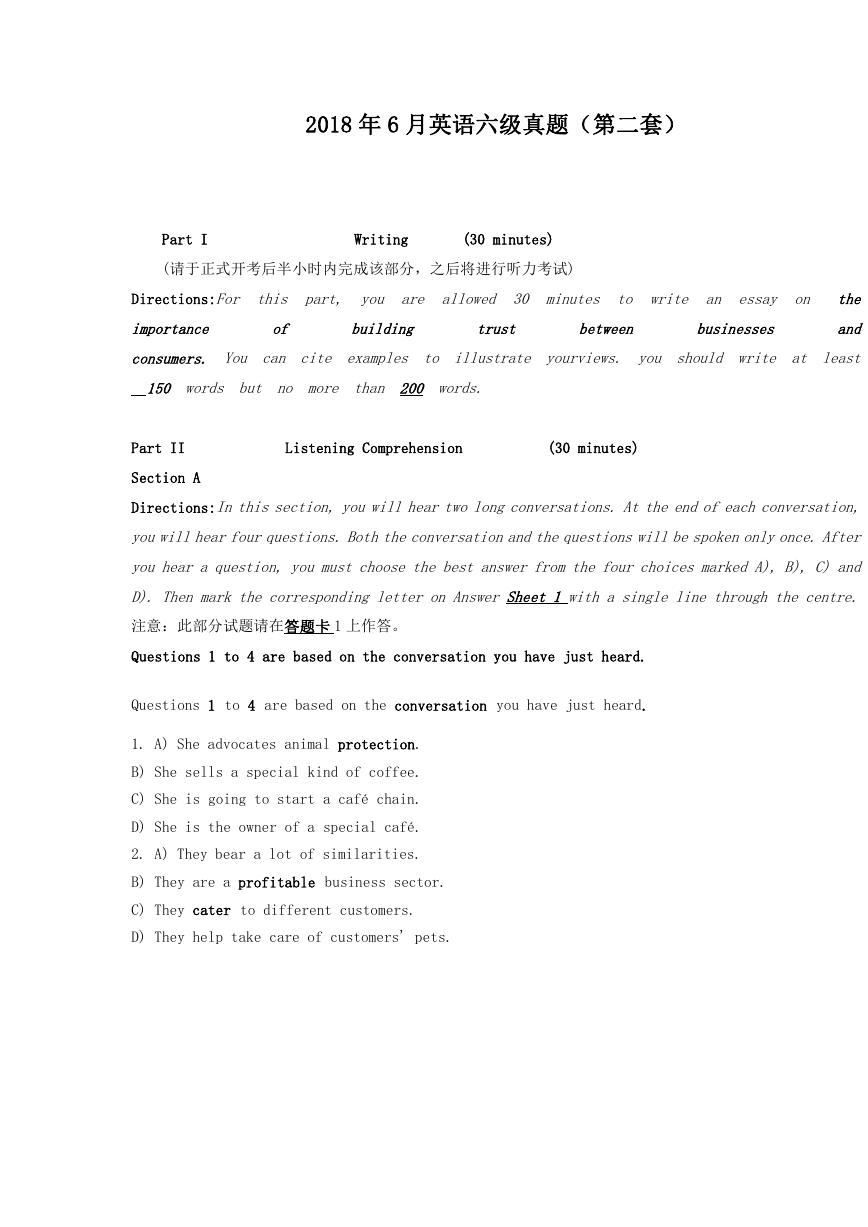

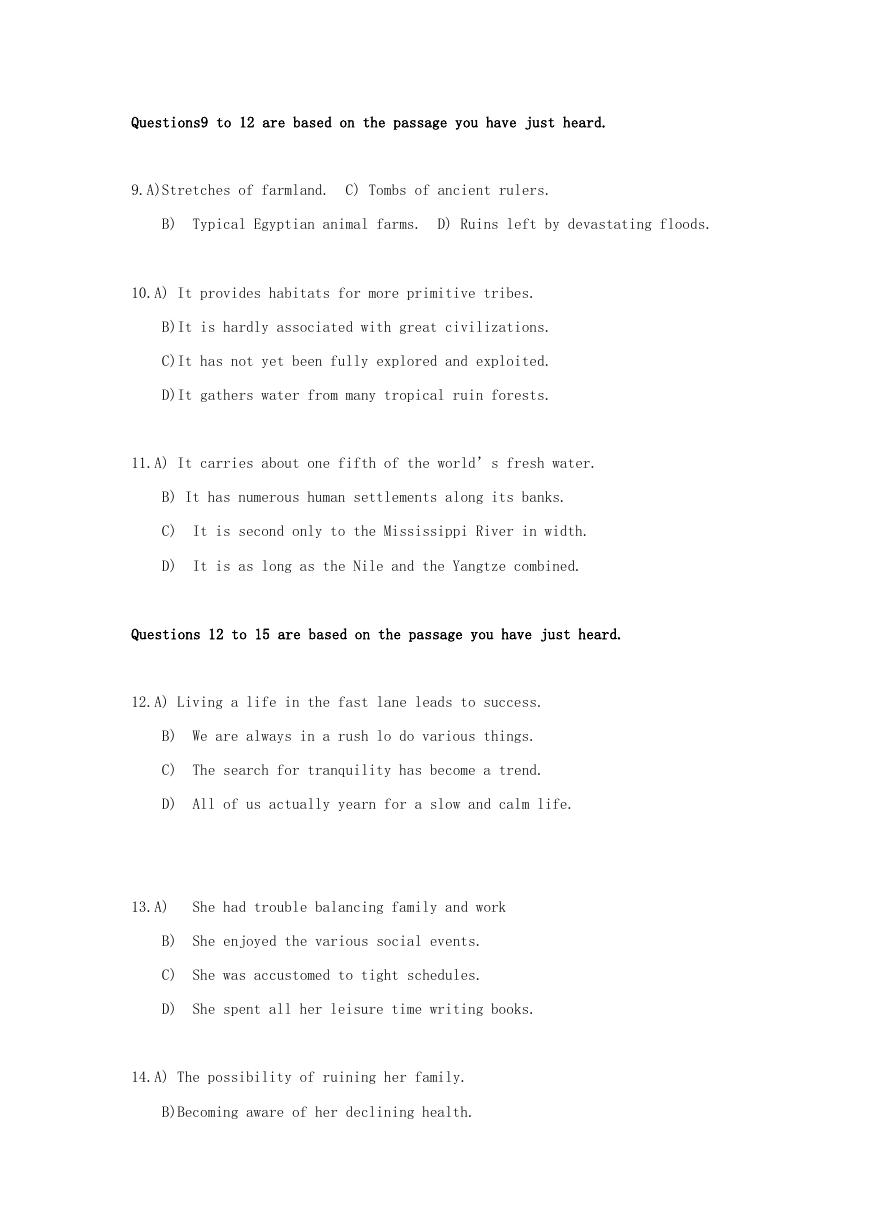
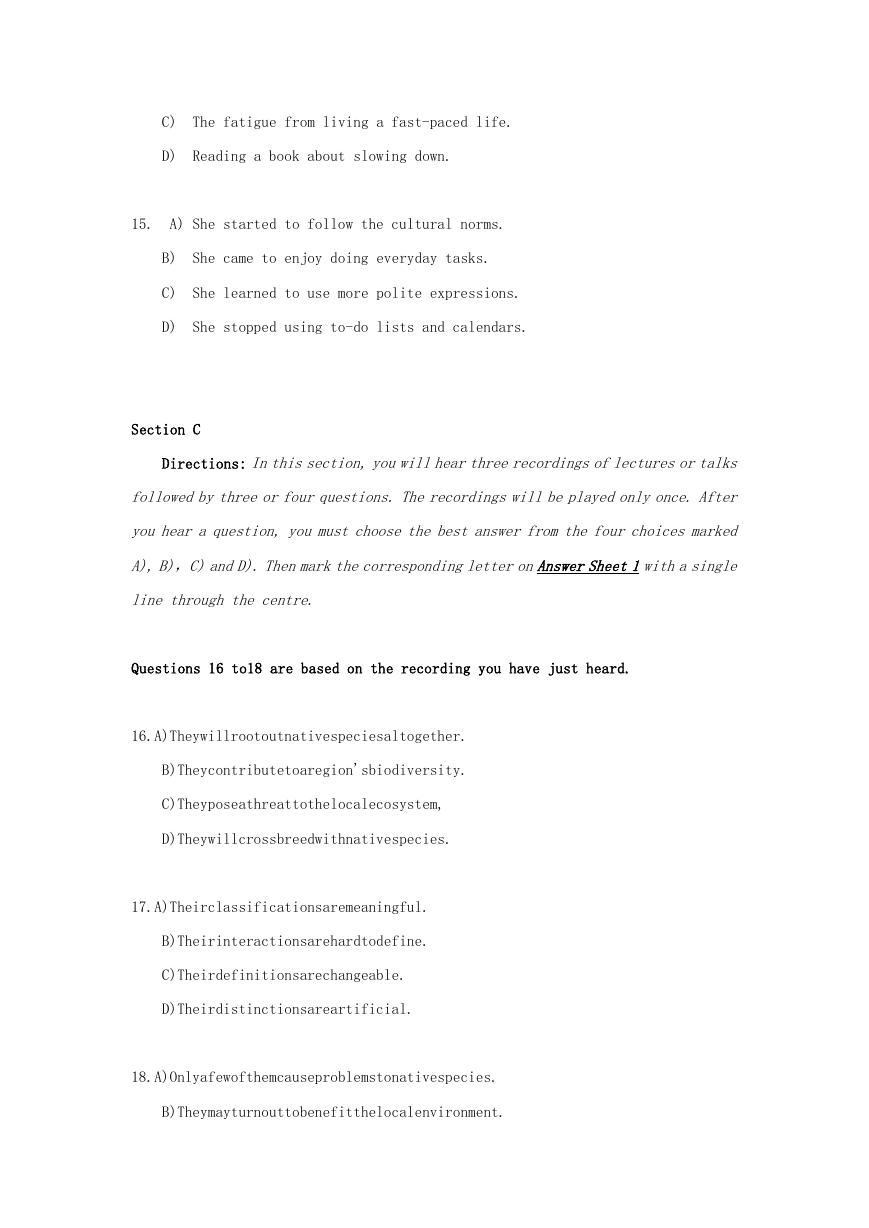
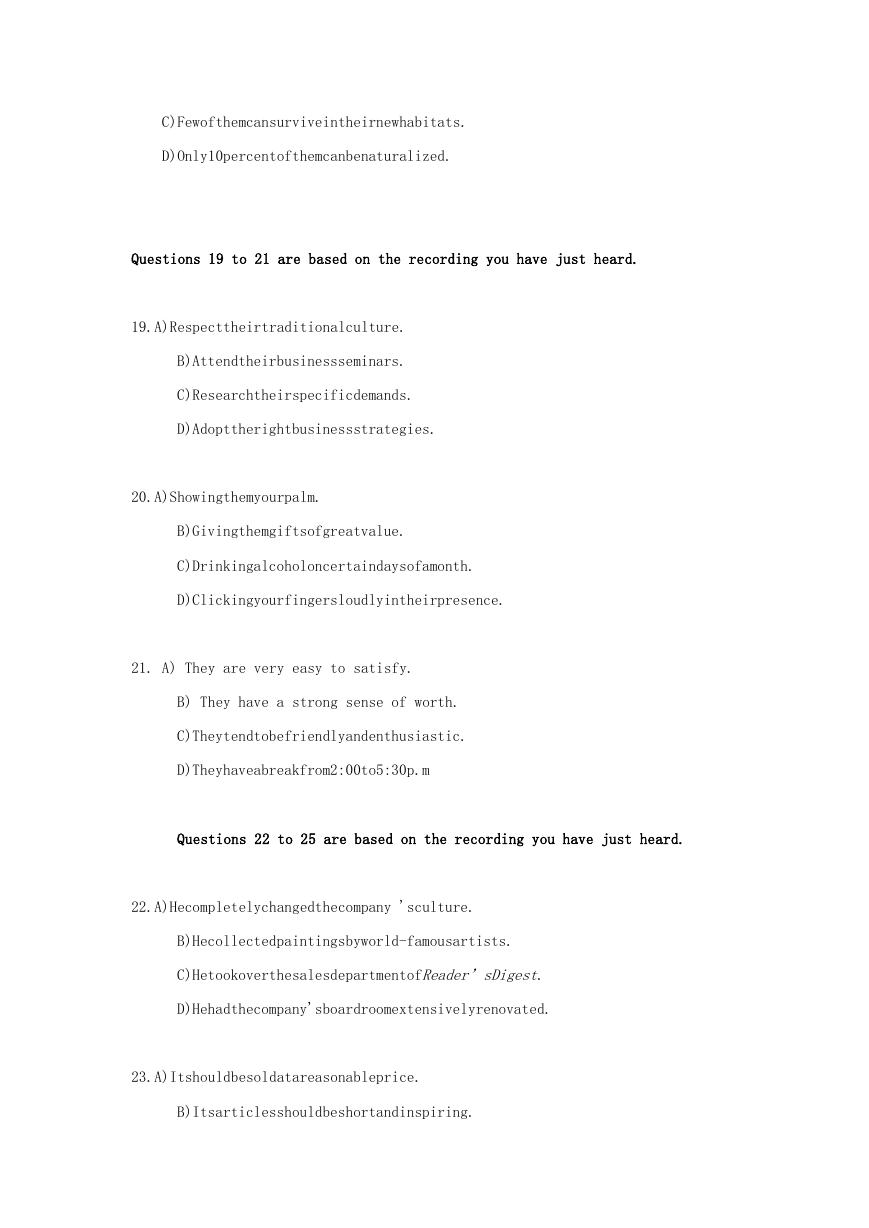
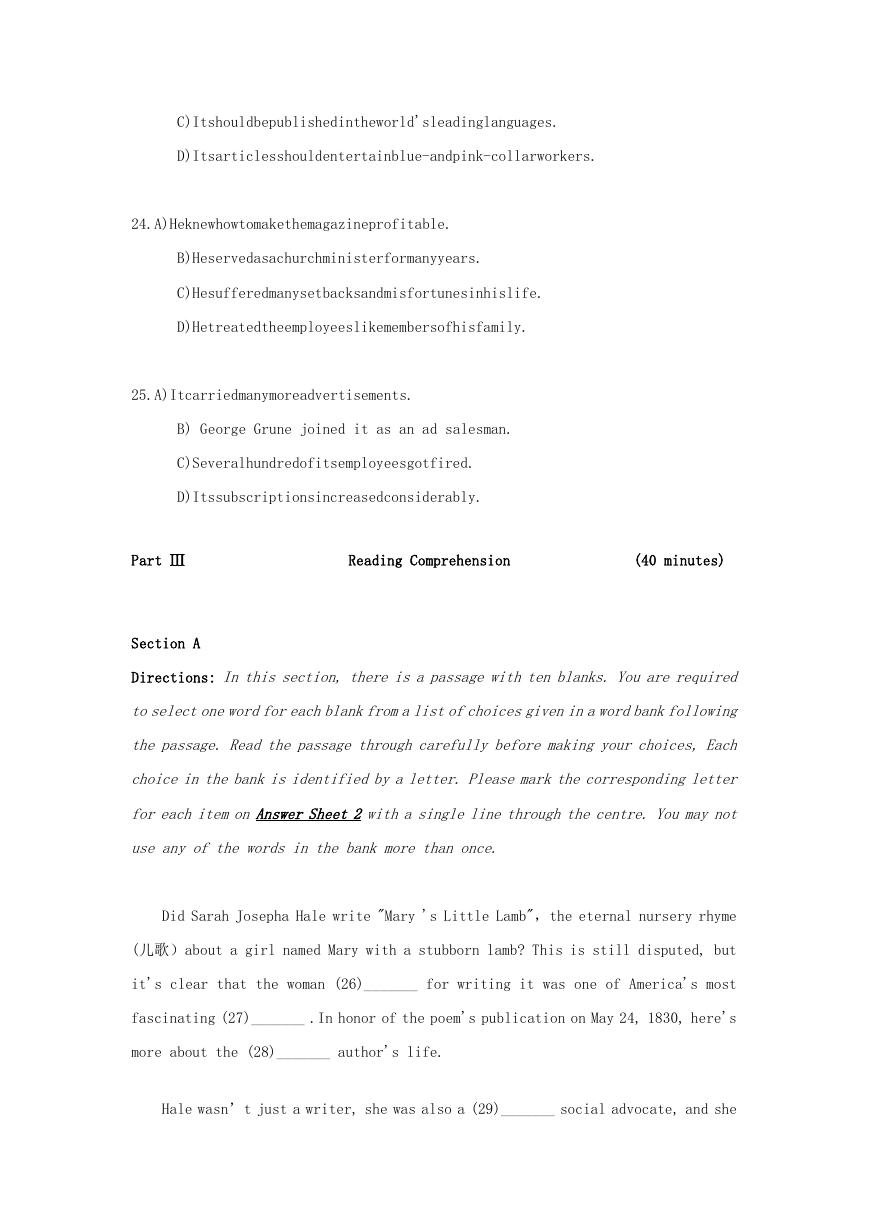
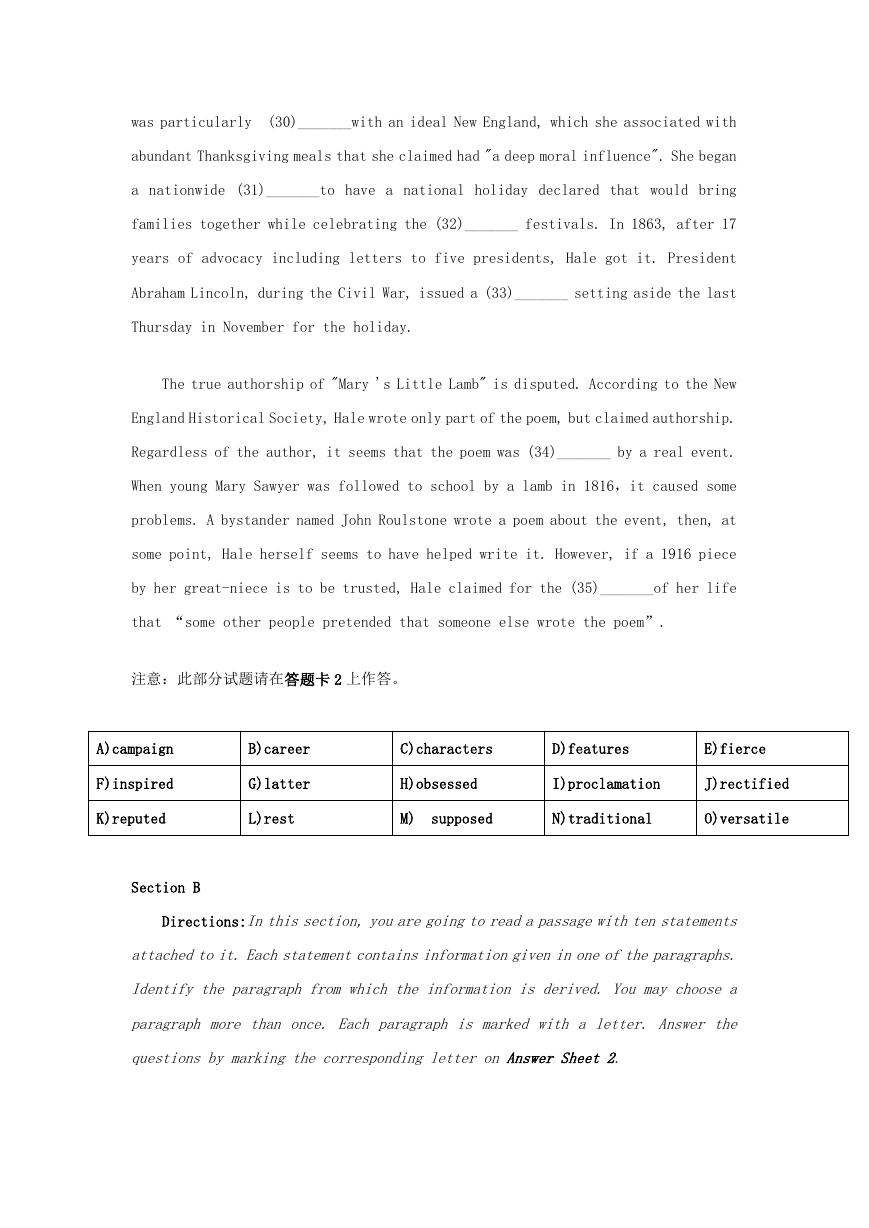
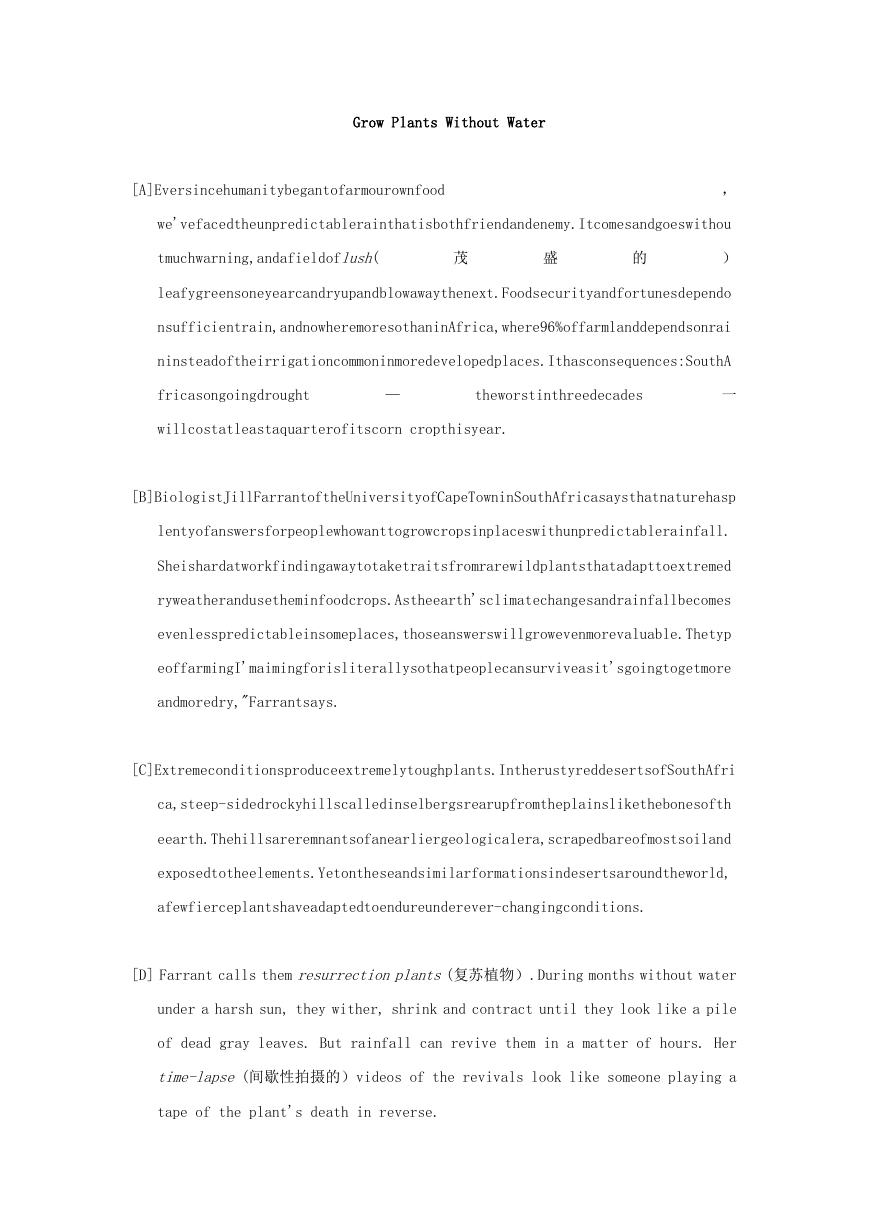








 2023年江西萍乡中考道德与法治真题及答案.doc
2023年江西萍乡中考道德与法治真题及答案.doc 2012年重庆南川中考生物真题及答案.doc
2012年重庆南川中考生物真题及答案.doc 2013年江西师范大学地理学综合及文艺理论基础考研真题.doc
2013年江西师范大学地理学综合及文艺理论基础考研真题.doc 2020年四川甘孜小升初语文真题及答案I卷.doc
2020年四川甘孜小升初语文真题及答案I卷.doc 2020年注册岩土工程师专业基础考试真题及答案.doc
2020年注册岩土工程师专业基础考试真题及答案.doc 2023-2024学年福建省厦门市九年级上学期数学月考试题及答案.doc
2023-2024学年福建省厦门市九年级上学期数学月考试题及答案.doc 2021-2022学年辽宁省沈阳市大东区九年级上学期语文期末试题及答案.doc
2021-2022学年辽宁省沈阳市大东区九年级上学期语文期末试题及答案.doc 2022-2023学年北京东城区初三第一学期物理期末试卷及答案.doc
2022-2023学年北京东城区初三第一学期物理期末试卷及答案.doc 2018上半年江西教师资格初中地理学科知识与教学能力真题及答案.doc
2018上半年江西教师资格初中地理学科知识与教学能力真题及答案.doc 2012年河北国家公务员申论考试真题及答案-省级.doc
2012年河北国家公务员申论考试真题及答案-省级.doc 2020-2021学年江苏省扬州市江都区邵樊片九年级上学期数学第一次质量检测试题及答案.doc
2020-2021学年江苏省扬州市江都区邵樊片九年级上学期数学第一次质量检测试题及答案.doc 2022下半年黑龙江教师资格证中学综合素质真题及答案.doc
2022下半年黑龙江教师资格证中学综合素质真题及答案.doc